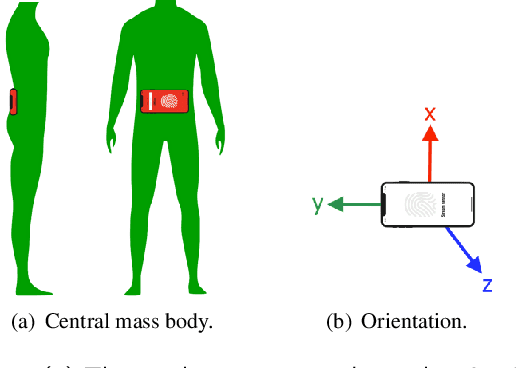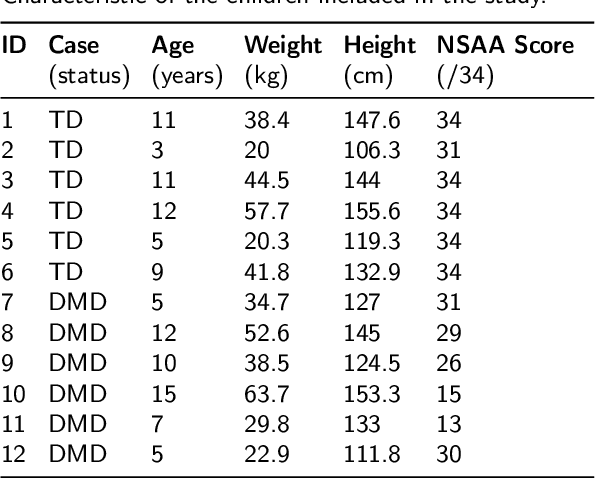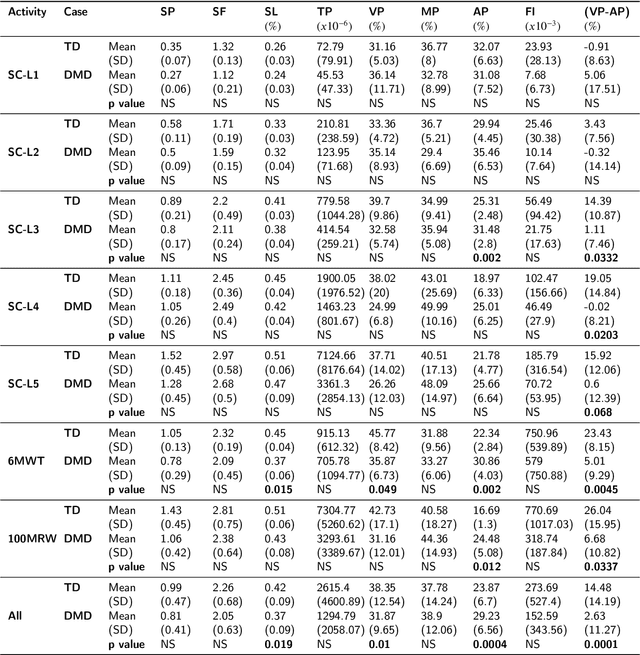Craig McDonald
Gait Characterization in Duchenne Muscular Dystrophy (DMD) Using a Single-Sensor Accelerometer: Classical Machine Learning and Deep Learning Approaches
May 12, 2021



Abstract:Differences in gait patterns of children with Duchenne muscular dystrophy (DMD) and typically developing (TD) peers are visible to the eye, but quantification of those differences outside of the gait laboratory has been elusive. We measured vertical, mediolateral, and anteroposterior acceleration using a waist-worn iPhone accelerometer during ambulation across a typical range of velocities. Six TD and six DMD children from 3-15 years of age underwent seven walking/running tasks, including five 25m walk/run tests at a slow walk to running speeds, a 6-minute walk test (6MWT), and a 100-meter-run/walk (100MRW). We extracted temporospatial clinical gait features (CFs) and applied multiple Artificial Intelligence (AI) tools to differentiate between DMD and TD control children using extracted features and raw data. Extracted CFs showed reduced step length and a greater mediolateral component of total power (TP) consistent with shorter strides and Trendelenberg-like gait commonly observed in DMD. AI methods using CFs and raw data varied ineffectiveness at differentiating between DMD and TD controls at different speeds, with an accuracy of some methods exceeding 91%. We demonstrate that by using AI tools with accelerometer data from a consumer-level smartphone, we can identify DMD gait disturbance in toddlers to early teens.
 Add to Chrome
Add to Chrome Add to Firefox
Add to Firefox Add to Edge
Add to Edge